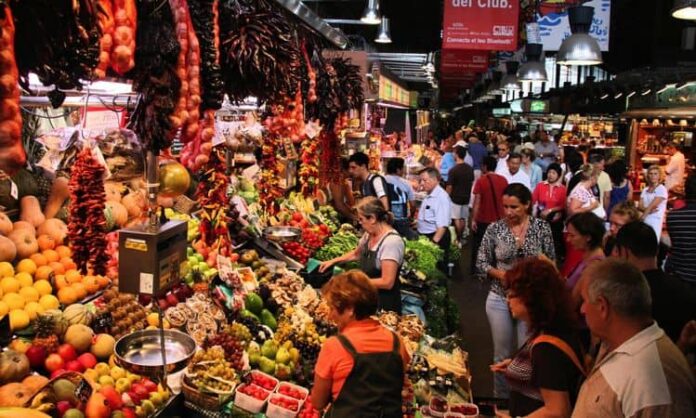NEW YORK: World food prices jumped in August after two consecutive months of decline, pushed up by strong gains for sugar, vegetable oils and some cereals, the United Nations food agency said on Thursday.
The Rome-based Food and Agriculture Organization (FAO) also said in a statement that worldwide cereal harvests would come in at nearly 2.788 billion tonnes in 2021, down on its previous estimate of 2.817 billion tonnes but still up on 2020 levels.
FAO’s food price index, which tracks international prices of the most globally traded food commodities, averaged 127.4 points last month compared with 123.5 in July.
The July figure was previously given as 123.0.
On a year-on-year basis, prices were up 32.9% in August.
FAO’s cereal price index was 3.4% higher in August from the previous month, with lower harvest expectations in several major exporting countries shunting up world wheat prices by 8.8% month-on-month, while barely surged 9.0%.
By contrast, maize and international rice prices declined.
FAO’s sugar index rose 9.6% percent from July, pushed up by concerns over frost damage to crops in Brazil, the world’s largest sugar exporter. Good production prospects in India and the European Union helped mitigate these concerns to a degree. Vegetable oil prices rose 6.7%, with palm oil prices hitting historic highs due to continued concerns over production levels and resulting inventory drawdowns in Malaysia. Quotations for rapeseed oil and sunflower oil also rose.
Meat prices edged up slightly in August, as strong purchases from China supported ovine and bovine meat prices and solid import demand from East Asia and the Middle East lifted poultry prices, FAO said.
The dairy price index edged slightly lower on the month.
FAO said the fall in its estimate for world cereal production this year was triggered by persistent drought conditions in several major producing countries.
Among the major cereals, the forecast for wheat production saw the biggest downward revision — down 15.2 million tonnes since July to 769.5 million tonnes — due mainly to adverse weather conditions in the United States, Canada, Kazakhstan and Russia.
The forecast for world cereal utilization in 2021/22 was cut by 1.7 million tonnes from July to 2.809 billion tonnes, still 1.4% higher than in 2020/21.
The estimate for world cereal stocks by the close of seasons in 2021/22 was lowered by 27.0 million tonnes since July to 809 million tonnes, pointing to a decline of 0.9% on stock levels registered at the start of the period, FAO said.























